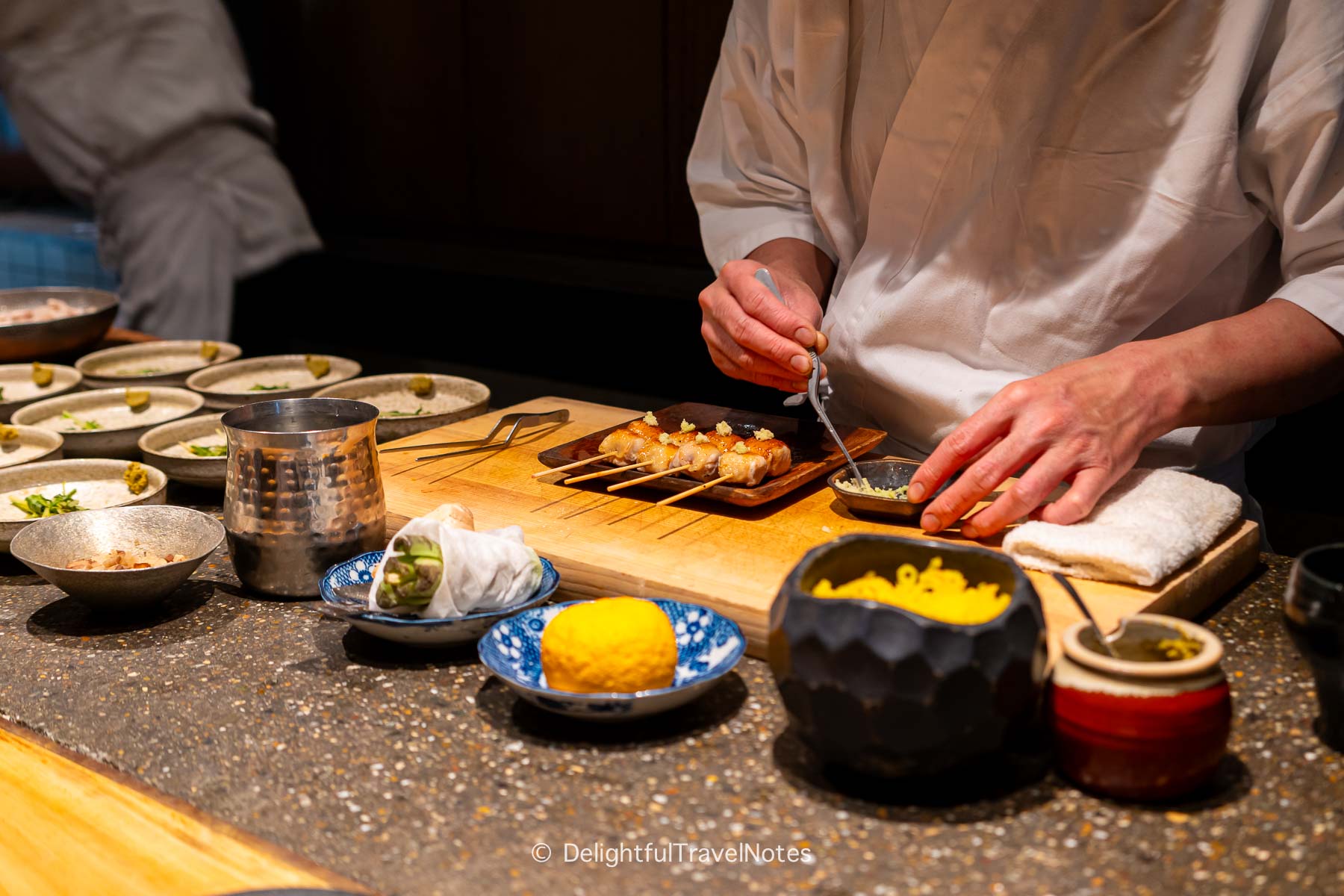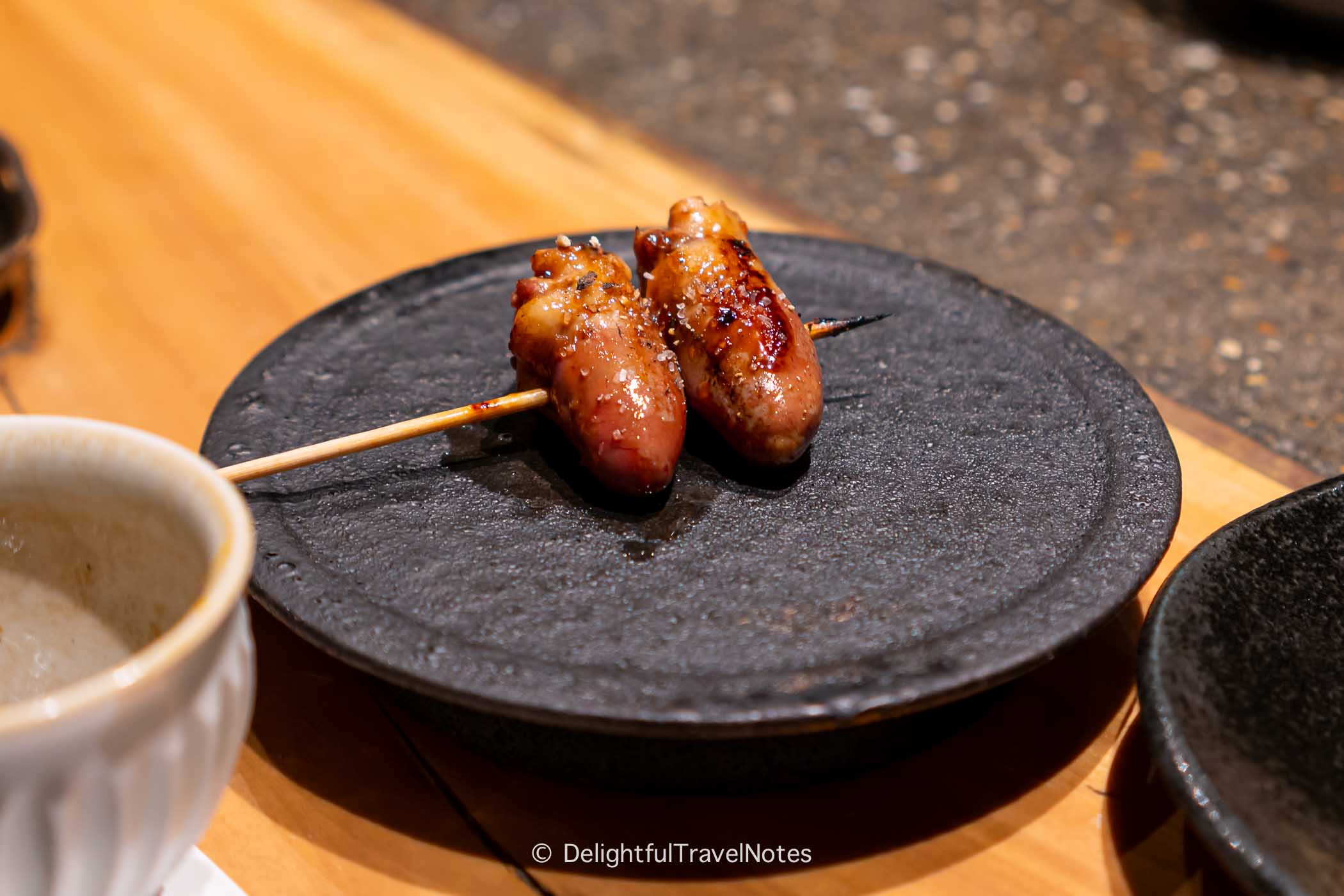Yakitori Omakase in Japan – Here’s What to Expect
Omakase can be found in various types of restaurants in Japan, including sushi, tempura and yakitori establishments. It refers to a meal where customers allow the chef to select and serve dishes according to what is freshest and best in season. This dining style showcases the chef’s creativity, expertise, and the highest quality ingredients available. Many travelers are excited to have sushi omakase when visiting Japan, but yakitori omakase is worth trying to. Here’s what to expect in such a meal.

Setting and Atmosphere
Yakitori restaurants often have a relaxed, lively and energetic atmosphere. I find it to be more casual than at sushi restaurants of the same level. It is also very fitting for a casual, fun and relaxing night with great food and some cold drinks.
You’ll likely sit at the counter facing the chef and the grill, which allows for interaction and a close-up view of the cooking process. The chef may explain the ingredient and preparation method for each skewer.

Although it is not necessary to know Japanese but from our experience, knowing a few words and phrases definitely comes in handy and improves the dining experience when sitting at the counter. One of the values of counter dining is the interaction and gaining a bit of understanding about the food. When researching a place for omakase experience, I usually go for at least 3.5 rating on Tabelog and favorable reviews on Google regarding friendliness to travelers.
Ingredients and Course Variety
If you visit an upscale or higher-end yakitori omakase, it’s very likely the restaurant uses high quality chicken breeds. For example, at Yakitori Taimatsu in Osaka, where we had a great dinner, they use Hinaidori, a famous local breed known for its tender and flavorful meat. Hinaidori is often considered one of the best tasting chickens in Japan and is frequently used in yakitori and other gourmet preparations.
The meal often begins with a few small appetizers, such as chicken liver pate, chicken prosciutto or chicken soup, depending on the restaurants. Then the skewers will be served, usually one by one.

You should expect a variety of skewers using different parts of the chicken. Some classic cuts include chicken thighs, breasts, wings and meatballs (tsukune). The chicken is lightly seasoned with salt to highlight its natural flavors or brushed with tare, a savory-sweet glaze made from soy sauce, sake, mirin, and sugar. The chef’s skill will ensure each skewer is cooked to perfection with crisp skin, juicy meat and the right amount of char.


Hearts and gizzards are also common, and these organs may be new to some diners, especially those who are from Western countries. Many Asian cultures have a long history of using every part of the animal as making the most out of every part of the animal was not just practical but necessary in the past. Besides, there is a broader appreciation for different textures in Asian cuisines – there are dishes we Asians enjoy just purely for the textures. The grilled hearts and gizzards are best with a sprinkle of salt.

You may also see chicken ovaries which are clusters of yolks inside the chicken. These are cooked to retain their creamy, velvety and runny texture, with a hint of smokiness from the grill.

So try to be open to trying these different parts of the chicken. After all, part of the appeal of omakase is the element of surprise. You may try dishes or ingredients you wouldn’t normally order and they may turn out to be your new favorites.
The meal may include some vegetable skewers to balance the meatiness. Toward the end, you may be served a noodle or rice dish. To conclude the meal, a light dessert, like seasonal fruit or a small sweet will be offered.
Price Range
Prices can vary widely depending on the restaurant’s reputation and location. A yakitori omakase can range from moderately priced to quite expensive, but overall I find them to be more affordable than sushi omakase. Seats are often limited, so reservation is recommended.
We paid 12,000 yen for our omakase at Yakitori Taimatsu and the dinner included 16 dishes – quite a reasonable price. It is a sister restaurant of Yakitori Ichimatsu, a restaurant with one Michelin star in Osaka.
Overall, we think it’s definitely worth trying a quality yakitori omakase in Japan. It doesn’t require a big splurge while still offering exceptional quality and variety. Additionally, it isn’t something you can often find outside of Japan, whereas sushi omakase or tempura omakase are much more popular.

Explore More
TeamLab Borderless in Tokyo: Thoughts on Why Some People Like It and Some Don’t
Taking Airport Limousine Bus in Tokyo: A Stress-Free Way to Get to Airports
Compare Different Train Options From Kansai International Airport To Osaka